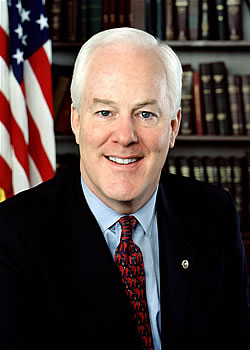SKIL Act of 2007

Senator John Cornyn (R-TX)
(Wikimedia Commons)
The Securing Knowledge, Innovation, and Leadership Act (SKIL Act) is aimed at assisting U.S. high-tech industries. Many employers in high-tech companies in the United States need to hire highly skilled workers, especially scientists, engineers, computer technicians, and mathematicians. The current H-1B visa program gives foreign-born workers visas for work in specialized (highly skilled) fields, including science and technology. This program caps the number of H-1B visas at a maximum of 65,000 each year.
The SKIL Act would increase the yearly cap of H-1B visas to 115,000. It would also let people graduating from accredited U.S. universities with an advanced degree in science, math, engineering, or technology apply for the visa regardless of the cap. In addition, the act would ease the process for science and technology graduates from foreign universities in getting a green card.
Pros and Cons
Supporters of the SKIL Act, like Sen. John Cornyn (R-TX), see it as a means to improve the competitiveness of U.S. high-tech industries, such as computer manufacturing, pharmaceuticals, and aerospace engineering. They claim that foreign-born workers often get degrees from U.S. universities but then return to their home countries, taking their knowledge and skills with them. At the same time, they cite a shortage of U.S.-born workers in the same specialized fields of industry.
Opponents, such as the organization Numbers USA, see this bill as an excuse for employers to pay lower wages to their specialized, foreign-born employees. They argue that the increased number of H-1B visas would flood the job market with foreign-born high-tech workers, pushing U.S.-born workers out of their jobs. Numbers USA, which seeks to limit immigration, argues that the reforms of the SKIL Act would actually discourage U.S. citizens from studying science and technology, because employers would already have enough foreign-born workers at reduced wages.


